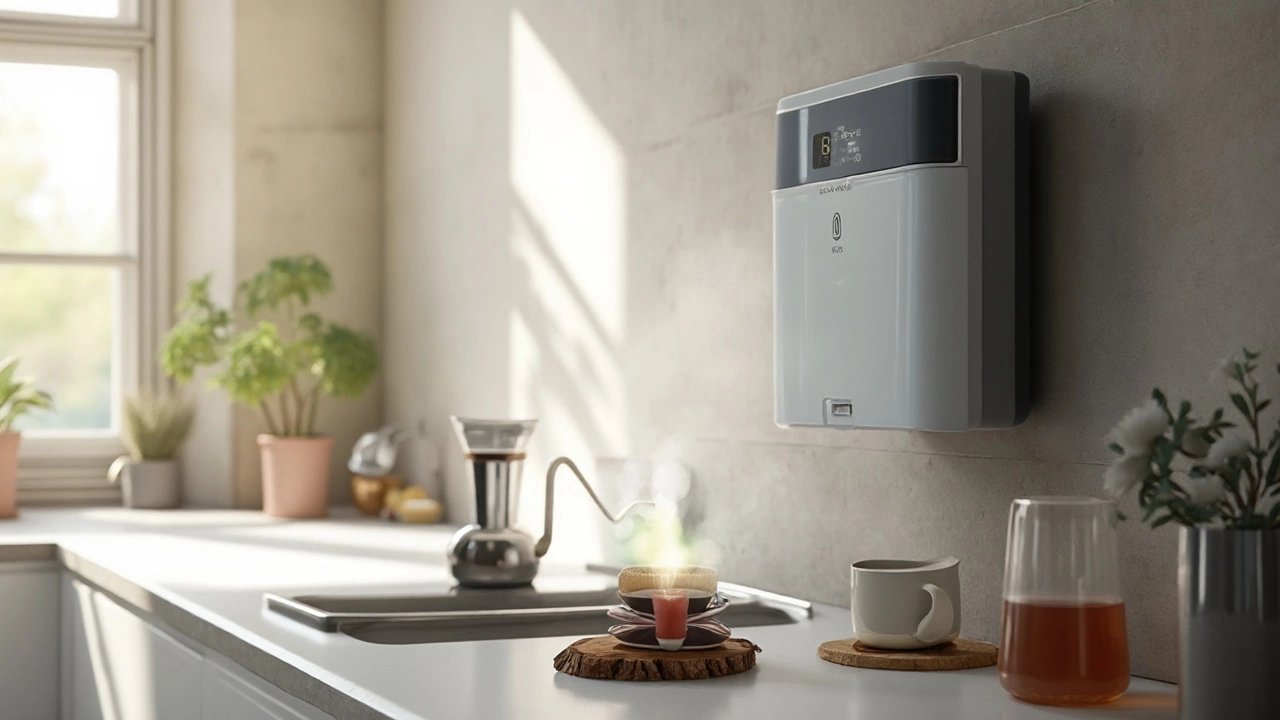Ever stopped to think why we still rely on kettles when there’s a gadget for almost everything else in the kitchen? Sure, kettles get the job done, pouring out hot water like clockwork, but in 2025, being stuck with the same old whistling device feels a little stubborn. People are constantly looking for faster, smarter, and safer ways to heat water. Whether it’s for a holy-morning-coffee ritual or a quick soup after a night out, nobody really wants to wait around. Here’s the wild thing—kettles aren’t even the fastest (or most energy-efficient) tool for the job anymore. Let’s get right into the alternatives, real-world facts, and a few tips you probably wish you’d known yesterday.
Why Ditch the Kettle? Breaking Down the Weaknesses
People love kettles, but they’re not perfect. If you’ve ever stood waiting for your water to heat up, watched a flaky limescale trail out of your spout, or wondered if there’s something faster, you’re definitely not alone. The classic kettle, whether electric or stovetop, hasn’t evolved much since the 19th century. Nowadays, time feels like money and these kettles can eat up both. According to the UK’s Energy Saving Trust, the average kettle gets used 1,500 times every year—and households waste more than $70 million annually just by overfilling them. That’s a huge hit on your utility bill and the planet. But let’s get even pickier than that: kettles can overboil and kill the flavor of green tea. They get gunky (looking at you, hard water areas), struggle to pour without leaking or splashing, hog counter space, and—let’s face it—rarely look as sleek as half the gadgets in your kitchen. Most standard electric kettles take about 3 minutes to boil a liter of water, which feels like an eternity if you’re in a rush.
Now, you might say, “My kettle does the trick every morning!” That’s fine if you like routine. But there’s a whole universe of techy, time-saving, and energy-efficient ways to get your hot water. Instant hot water taps, countertop dispensers, induction-ranged pots, or even high-end smart tea makers are making big splashes—just with less whistle and wait. Some brands now use precision temperature controls so you never kill your oolong or burn your AeroPress. Others have built-in filters cleaning every drop before it hits your mug, something the average kettle just cannot promise. The bottom line: if you’re in love with your kettle, no judgement, but don’t think it’s your only (or even your best) option.

Kettle-Killers: Alternatives That Raise the Game
If you thought the kettle was unique, think again. The market’s filled with gizmos that boil water with more flair, speed, and intelligence than your trusty Black+Decker. Let’s start with hot water dispensers. These plug-in units sit on your countertop, and they dish out near-boiling water in seconds. The Breville HotCup or the Morphy Richards Hot Water Dispenser, for example, shoot out steam in 10 seconds flat. That’s six times faster than most kettles. They often come with measured dispensing so you only heat what you use—perfect if you’re guilty of boiling a full kettle for one lonely mug. You save electricity and time, every single day.
Or go fancier with instant hot water taps, like the Quooker or InSinkErator taps. These sit right next to your regular sink tap. With a double-push and a twist, you’ve got 98°C water on tap, straight into your cup. You skip the refill hassle, the cable spaghetti, and the endless debate about who’ll wash the kettle next. Not just for drinks, these taps make instant noodles, oatmeal, or blanching veggies on autopilot. Studies from the Fraunhofer Institute found that households with instant hot taps used about 20% less energy than those reheating kettles all day. Plus, they’re fitted with child locks, insulation, and all the safety jazz your kettle lacks.
And then there’s probably the most overlooked gadget: proper induction cooktops paired with smart pans. Induction boils water much quicker than a regular stovetop or coil—two cups in less than a minute. Higher precision means no energy gets wasted as heat lost to the air, so you’re getting a cleaner and surprisingly cost-effective deal. You’ve also got portable induction hobs (think IKEA’s TILLREDA) that take up tiny amounts of space and double as travel buddies.
Coffee and tea people? Dedicated machines will knock your socks off. The Breville One-Touch Tea Maker lets you program steep time and temp, so you’re never guessing if you scorched your Japanese gyokuro. The Zojirushi Water Boiler & Warmer keeps water at your preferred temperature all day, no waiting, no reheating. These appliances may seem overkill if all you drink is plain black tea, but once you taste a loose-leaf brewed at 80°C instead of water scalded at 100°C, you’ll never go back.
Let’s play with some stats so you see just how much time these alternatives can save.
| Appliance | Time to Heat 1 Cup (240ml) | Average Energy Use per Boil | Typical Features |
|---|---|---|---|
| Standard Electric Kettle | 1:30 min | 0.10 kWh | Auto shut-off, basic temp |
| Hot Water Dispenser | 0:25 sec | 0.03 kWh | Portion control, quick pour |
| Instant Hot Tap | Instant | 0.01 kWh (standby) | Temperature control, filtration |
| Induction Hob | 0:50 sec | 0.05 kWh | Portable, fast boil |
| Tea/Coffee Machine | Varies (pre-heated) | 0.03-0.05 kWh | Exact temp, brew time, keep warm |
Just looking at that table, you’d think kettles are getting schooled left and right. The real win comes down to lifestyle: if you want speed, savings, and safety, these alternatives come out on top.

Making the Switch: Tips, Pitfalls, and Choosing Your Upgrade
So you’re tempted to toss out the kettle after this. It’s not just a question of “should I?”—it’s about the kind of kitchen you have, who’s living in your space, and how you actually use hot water. If you have kids or pets darting around the counter, an instant hot tap with built-in safety locks is probably your best friend. Live in an area caked in hard water? Go for a dispenser or machine with a replaceable filter—it’ll save your taste buds and your appliance. Want something you can take to college or Airbnb rentals? Induction hobs and compact dispensers pack light.
One big tip: check your energy costs. Devices that keep water hot all day (like the Zojirushi Boiler or high-capacity tap units) can sip at your electricity bill in trickles, and those dimes add up. Many are programmable to ‘sleep’ overnight or slow down on idle. That means you get the balance between convenience and cost, without blowing your eco-friendly credentials.
Don’t forget maintenance, either. Kettles collect limescale, but so do most water heaters. Descale your equipment regularly—it takes five minutes with white vinegar. Don’t cheap out on filters if you have mineral-heavy water. The less gunk in your machine, the longer it lasts and the fresher your drink will taste.
Space counts for a lot. Instant hot taps look seamless but need professional installation and take up space under your sink—measure before you buy! Some countertop dispensers hog as much real estate as a microwave, so check your workspace and compare models. If you want portable and nimble, induction or smaller dispensers are easier on compact kitchens.
Try not to bite on the latest, greatest toy unless it solves a real problem for you. If you only drink tea on weekends, a $500 hot water tap sounds like overkill. But if you live off coffee, cook lots of noodles, or steam veggies every dinner, it’s a no-brainer. And for the folks with smart homes? Many of these modern water heaters now work with Alexa or Google Home, letting you start pre-boil from your bed. Yes, smart home integration is now real for kitchen water appliances—welcome to the future.
kettle alternatives are out there in force. Pick the one that fits your rhythm, your counter, and maybe, your Wi-Fi connection. Forget the era where you wait and hope for the whistle—hot water is now smarter, cleaner, and snapped to your schedule.

